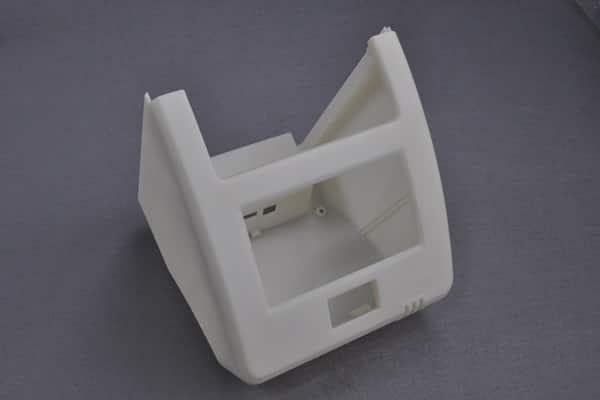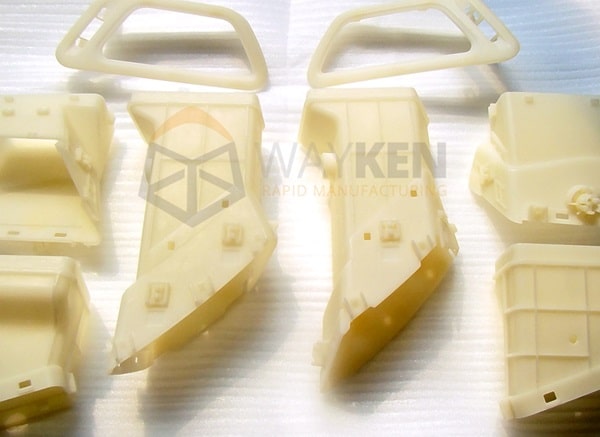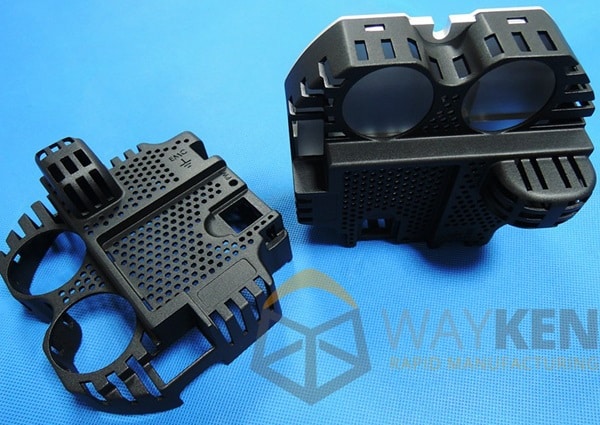Recently, modern scientific and technological advancements plays an important role in the development of the automotive industry. Especially the application of 3D printing technology in automobile prototyping manufacturing has broken the shortcomings of traditional machinery manufacturing, so that automobile production efficiency, production quality, and other aspects have been greatly improved.
The article analyzes the application process of 3D printing technology in the field of automotive prototyping manufacturing and discusses its specific applications to enhance the quality of automotive manufacturing.
Automotive R&D Phase
The R&D stage is the basic link of automobile manufacturing, which mainly involves prototype creation (including the vehicle’s exterior and internal structure), functional testing, structural analysis, and cost control. Combined with the principle and characteristics of 3D printing technology, it can be comprehensively applied in the R&D phase to enhance efficiency.

First, in terms of prototyping, the main purpose is to reproduce the shape and structure of the car according to the design drawings, and to use the produced prototype as the basis for testing and optimisation. Through 3D printing, automotive designers can quickly create prototypes of physical parts or assemblies, ranging from simple interior elements and instrument panels to scale models of the entire vehicle.
Rapid prototyping helps organisations turn ideas into compelling physical prototypes, then advance those concepts to high-fidelity prototypes that closely match the end result, and guide the product through a series of validation phases leading to mass production.
Secondly, in terms of functional testing, it is necessary to ensure that the design prototype meets the intended performance and reliability. 3D printing can be used to produce functional test models of automobiles, such as the interior, seats, doors and other parts of the car. At the same time, it can be used to create a structural analysis model, optimizing the performance and safety of automobiles.
Third, 3D printing technology can be used for cost-benefit analysis in automotive prototyping manufacturing. For example, from the perspective of material resources, automotive machinery manufacturing are usually use metal parts, and although thermoplastics can also meet the corresponding strength requirements, they cannot meet the testing requirements.
If metal materials are used directly in the testing process, it will cause a certain waste of resources. By incorporating 3D printing, enhanced plastic components can be created to replace metal parts during testing, saving resources and costs.
Automotive Manufacturing

3D printing technology plays an important role in automotive prototyping manufacturing, and is capable of producing parts with complex shapes and high precision, such as engine mounts, high-efficiency heat exchangers, and customized car seats. For instance, selective laser melting 3D printing technology can be used to manufacture engine brackets. Using 3D printing to manufacture high-performance heat exchangers helps to increase the speed of their production, thus guaranteeing the quality of production and its performance.
In terms of customized automotive seats, 3D printing can better achieve personalized seat customization, which is conducive to the design and manufacture of different hardness of the seat, so that it is more ergonomic, and has a strong comfort, breathability and support effect.
For example, in the development of new energy vehicles, 3D printing technology can be used to manufacture automotive parts, such as instrument panels, control screens, interior trim and so on. Compared with traditional automobile manufacturing technology, the application of 3D printing technology in automobile manufacturing can greatly reduce the energy consumption of automobile production.
Automotive Assembly
Traditional automotive assembly processes are complex and demand high material and tool standards. 3D printing technology can streamline assembly by reducing the time required and improving efficiency. In assembly, 3D printing is mainly applied to create high-performance auxiliary tools, which can withstand complex environments and optimize assembly processes, thus controlling costs and increasing production speed.
At the same time, 3D printing helps to optimize the production of assembly tools, through the combination of AFP technology, so as to manufacture lightweight and durable grippers for assembly robots, to achieve a substantial increase in assembly speed and accuracy. 3D printing also enables the creation of customized body parts, or seats, steering wheels and other interior parts to meet the personalized needs of car owners.
Automotive Parts Repair and Replacement
In the field of automotive machinery manufacturing, the repair and replacement of parts is an inevitable problem and one of the main application directions of 3D printing technology, including customising special parts, repairing broken or worn parts and so on.

Due to the limitation of auto parts, it is not possible to achieve complete matching of parts during auto repair. As a result, many imported and high-end cars have long repair times and costly repairs, creating great challenges for the auto repair industry. 3D printing technology can produce prototype parts and print models that are identical to the auto parts, as well as carry out performance testing and optimisation, thus effectively solving the problem of repairing spare parts for imported cars.
In terms of lightweight design, 3D printing technology can be used to produce lightweight auto parts to reduce vehicle mass and improve fuel efficiency and performance. In addition, 3D printing technology can be used to produce parts with complex shapes and structures, such as turbochargers and exhaust system components.
Summary
The application of 3D printing technology in the field of automotive machinery manufacturing has achieved remarkable results. The application of 3D printing technology can save production costs and shorten processing time. At the same time to achieve a high degree of customisation of automotive parts manufacturing, to solve the performance of automotive parts and moulds.

